Hidden within the vast wilderness of Alaska lies a treasure for wildlife enthusiasts and nature lovers alike – Denali National Park and Preserve. Spanning over six million acres of pristine wilderness, this remarkable reserve offers visitors the rare opportunity to witness all of Alaska’s “Big Five” mammals in their natural habitat. While many travel to Africa for their Big Five safari experiences, Alaska’s version provides an equally impressive, yet distinctly North American wildlife adventure. The park’s diverse ecosystems create the perfect conditions for these magnificent creatures to thrive, making it one of the most spectacular wildlife viewing destinations in North America.
Understanding Alaska’s Big Five Mammals

Alaska’s Big Five consists of the brown (or grizzly) bear, moose, caribou, Dall sheep, and the elusive gray wolf. Each of these impressive mammals has adapted to the harsh subarctic conditions of Alaska, developing unique characteristics and behaviors that allow them to survive and thrive in this challenging environment. Unlike their African counterparts, these animals aren’t grouped together for hunting purposes but rather for their significant presence in Alaska’s ecosystem and their popularity among wildlife viewers. Denali National Park is the only place in Alaska where all five species can be reliably observed within a single protected area, making it a must-visit destination for wildlife enthusiasts.
Denali National Park: A Wildlife Haven

Established in 1917 as Mount McKinley National Park, Denali has grown to become one of America’s most treasured wilderness areas. The park encompasses boreal forest, alpine tundra, and snow-capped mountains, including North America’s highest peak, Denali (formerly Mount McKinley), standing majestically at 20,310 feet. This varied landscape creates diverse habitats supporting over 39 mammal species, 169 bird species, and thousands of plant species. The park’s limited road access and strict conservation policies have helped maintain healthy wildlife populations and natural ecosystem processes, creating an authentic wilderness experience for visitors and a true sanctuary for the Big Five mammals.
The Mighty Brown Bear

The brown bear, often called the grizzly in interior regions, is perhaps the most iconic of Alaska’s Big Five. These powerful omnivores can weigh up to 1,500 pounds and stand nine feet tall on their hind legs. In Denali, approximately 300-350 brown bears roam freely, primarily in the park’s open tundra areas where they can be spotted digging for roots, berries, or ground squirrels. During salmon runs, they may congregate along streams. Brown bears in Denali have massive home ranges of up to 100 square miles, and females typically produce cubs every 3-4 years. Visitors often spot them from the park road between miles 20-60, particularly in early morning or evening hours when they’re most active. Their impressive size, strength, and intelligence make them a highlight of any Denali wildlife viewing experience.
The Majestic Moose

As North America’s largest deer species, the moose is a true giant of the north. Standing up to 7 feet tall at the shoulder and weighing up to 1,600 pounds, these impressive herbivores are instantly recognizable by their enormous palmate antlers (in males) and distinctive long snout. Denali’s moose population fluctuates between 1,200-1,800 individuals, with concentrations in the park’s forested lowlands and wetland areas where they feed on aquatic vegetation, willow, and birch. Unlike their caribou cousins, moose are primarily solitary animals, coming together only during breeding season in autumn. They’ve adapted perfectly to northern environments with their long legs allowing them to navigate deep snow and access underwater plants. Visitors frequently spot moose along the first 15 miles of the park road and near Wonder Lake, particularly during early morning and evening hours.
The Migratory Caribou

Caribou, known as reindeer in Europe, are among the most migratory mammals on earth. Denali hosts approximately 2,000-3,000 caribou, primarily from the Denali Caribou Herd, which moves seasonally throughout the park and beyond. Both males and females grow antlers, with bulls developing massive, sweeping racks that can span over four feet wide. These medium-sized members of the deer family are uniquely adapted to Arctic conditions with hollow hair that provides exceptional insulation and broad hooves that serve as effective snowshoes in winter and paddles when swimming across rivers. Their diet consists primarily of lichens (particularly in winter), supplemented with grasses, sedges, and shrubs during summer. The best viewing opportunities come during their fall migration in August and September when they cross the park road in large groups, particularly between miles 20-30.
The Nimble Dall Sheep
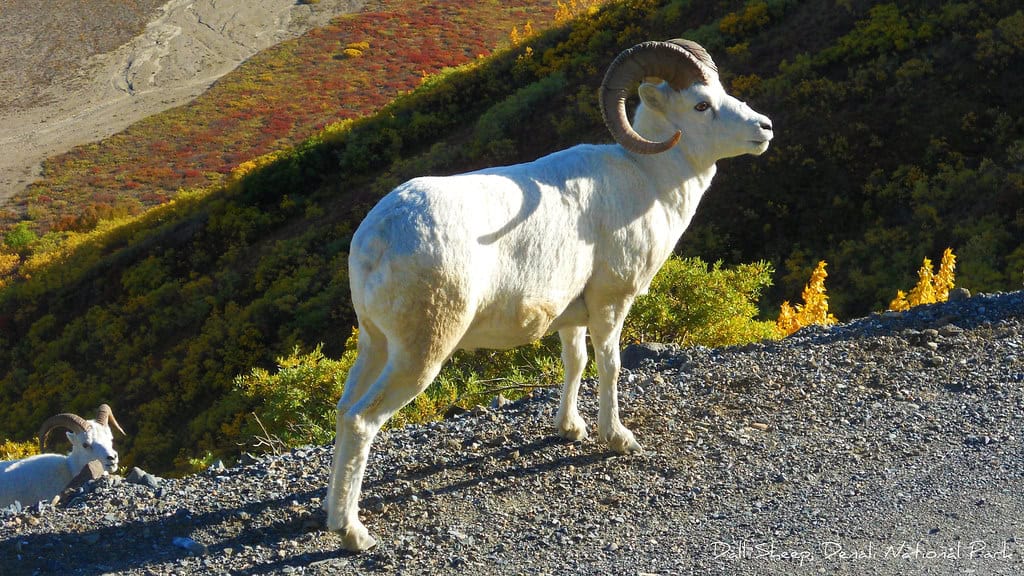
Named after naturalist William Dall, these striking pure white sheep are the mountain masters of Denali. Approximately 1,800-2,000 Dall sheep inhabit the park’s rugged mountains, cliffs, and alpine meadows, where their excellent climbing abilities keep them safe from predators. Males (rams) are distinguished by their massive curved horns that can grow throughout their lifetime, sometimes completing a full curl. Females (ewes) have shorter, more slender horns. These agile climbers feed primarily on grasses, sedges, and other vegetation found on high mountain slopes. Their acute vision helps them spot predators from great distances, while their specialized hooves with hard outer rims and soft, grippy centers allow them to navigate precarious mountain terrain with impressive agility. Visitors can often spot these white dots against the mountainsides between miles 10-15 and around Polychrome Pass (mile 46) of the park road.
The Elusive Gray Wolf
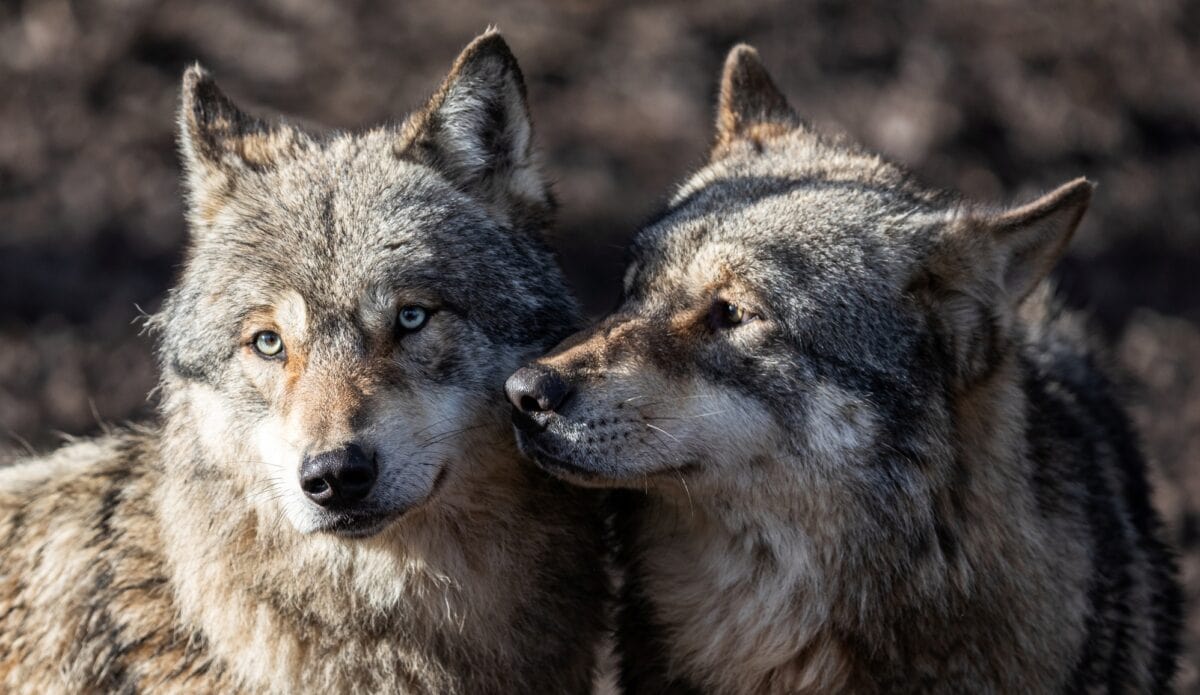
Perhaps the most difficult of the Big Five to observe, Denali’s gray wolves represent one of the few protected wolf populations in the United States. Approximately 75-100 wolves living in about 10-12 packs patrol territories throughout the park. These highly intelligent social predators typically hunt in coordinated packs, primarily targeting caribou and moose, though they’ll also feed on smaller mammals and carrion. Gray wolves play a crucial ecological role as apex predators, helping regulate prey populations and maintain ecosystem health. Each wolf pack defends a territory ranging from 300-1,000 square miles, with individual wolves capable of traveling up to 30 miles in a day. Though spotting wolves requires patience and luck, the best opportunities come along the park road between miles 30-70, particularly in Toklat River and Thorofare Pass areas during early morning hours.
Wildlife Viewing in Denali

The primary way to experience Denali’s wildlife is aboard the park shuttle buses that traverse the 92-mile park road—the only major road access into the wilderness. Private vehicles are restricted beyond mile 15, making the shuttle system essential for exploration deeper into the park. These buses serve as mobile wildlife viewing platforms, with experienced drivers who know the best locations and can safely stop when animals are spotted.
The green transit buses offer the most flexibility, allowing visitors to hop on and off throughout the day. For those seeking a more comprehensive experience, the narrated tour buses provide educational commentary but follow fixed itineraries. Wildlife viewing is generally best during the summer months from June through September, with early morning and evening hours offering peak activity periods for many species.
Best Times and Locations for Viewing

While Denali’s wildlife can be unpredictable, certain patterns emerge that can help maximize viewing opportunities. The summer months of June through early September offer the most reliable wildlife viewing, coinciding with the park’s main operating season. Early morning (5-9 AM) and evening hours (6-10 PM) typically showcase the most animal activity, though the extended daylight of Alaskan summers means animals may be active at any time. Location-wise, the Polychrome Pass area (miles 45-50) offers excellent panoramic views for spotting wildlife across vast landscapes. Toklat River (mile 53) frequently attracts bears and caribou, while the Eielson Visitor Center area (mile 66) provides spectacular views and good wildlife opportunities. For wolf sightings, the stretch between miles 30-45 has historically been productive, though wolves remain challenging to locate.
Wildlife Photography Tips

Capturing Alaska’s Big Five through your camera lens requires preparation and patience. A telephoto lens with at least 300mm focal length is essential for wildlife photography in Denali, as park regulations and safety concerns require maintaining significant distance from animals. Image stabilization features help compensate for shooting from moving buses or in low light conditions.
Serious photographers should consider bringing a monopod that can be braced against bus windows or seats. Always prepare your camera settings before an animal appears, as wildlife encounters are often brief and unexpected. The bus windows can be opened for unobstructed shots, but be prepared for dusty conditions along the park road. Most importantly, remember that no photograph is worth disturbing or endangering wildlife—always follow park guidelines and prioritize animal welfare over getting the perfect shot.
Safety Considerations

Observing wild animals in their natural habitat comes with significant responsibility for visitor safety and wildlife protection. Park regulations require maintaining minimum distances of 300 yards from wolves and bears, and 25 yards from all other wildlife. These distances help ensure both visitor safety and minimize stress on the animals. When hiking, make noise to avoid surprising animals, especially in areas with limited visibility or near noisy streams.
Carry bear spray and know how to use it when exploring beyond developed areas. Never approach, feed, or attempt to touch wildlife, as this can alter natural behaviors and create dangerous situations. Remember that all Denali wildlife is truly wild—they aren’t habituated to humans and can react unpredictably if they feel threatened. The park’s wildlife management philosophy emphasizes maintaining natural behaviors and minimizing human interference.
Conservation Efforts in Denali

Denali National Park represents one of America’s most successful conservation stories, protecting vast wilderness and wildlife populations in a largely natural state. Park biologists conduct regular population surveys and research projects to monitor the health and dynamics of the Big Five mammals and their ecosystems. Wolf research has been particularly extensive, with some packs tracked since the 1980s, providing valuable long-term data on predator-prey relationships. The park’s relatively intact predator-prey systems offer rare scientific opportunities to study how these complex ecological relationships function without significant human intervention.
Conservation challenges include climate change impacts, which are occurring more rapidly in northern latitudes, potentially affecting wildlife habitat and food sources. The park also navigates complex relationships with neighboring lands where hunting may affect animals that move beyond park boundaries. Despite these challenges, Denali remains a model for American conservation, balancing research, protection, and public access.
Planning Your Visit
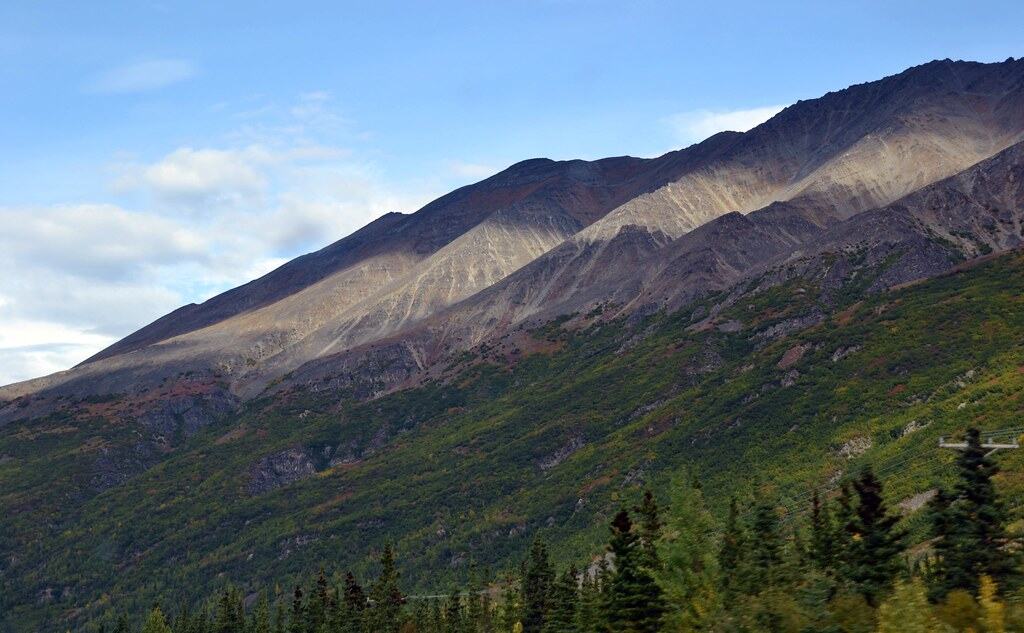
Experiencing Denali’s Big Five requires thoughtful planning. The park’s main season runs from late May through early September, with peak wildlife viewing opportunities in July and August. Advance reservations for shuttle buses are strongly recommended, particularly for trips beyond Toklat River (mile 53), as these longer journeys offer the best overall wildlife viewing potential. The Kantishna Experience and Eielson Excursion buses provide excellent narrated experiences, while transit buses offer more flexibility.
Consider staying multiple days in or near the park to increase wildlife viewing opportunities, as animal sightings can vary greatly day to day. Pack binoculars (at least 8×42 magnification), appropriate layers for changing weather conditions, rain gear, insect repellent, snacks, and water for bus journeys that can last 6-12 hours. Accommodation options range from the park’s single campground at Riley Creek to various lodges and hotels in the nearby community of Denali Park.
Beyond the Big Five: Denali’s Other Wildlife
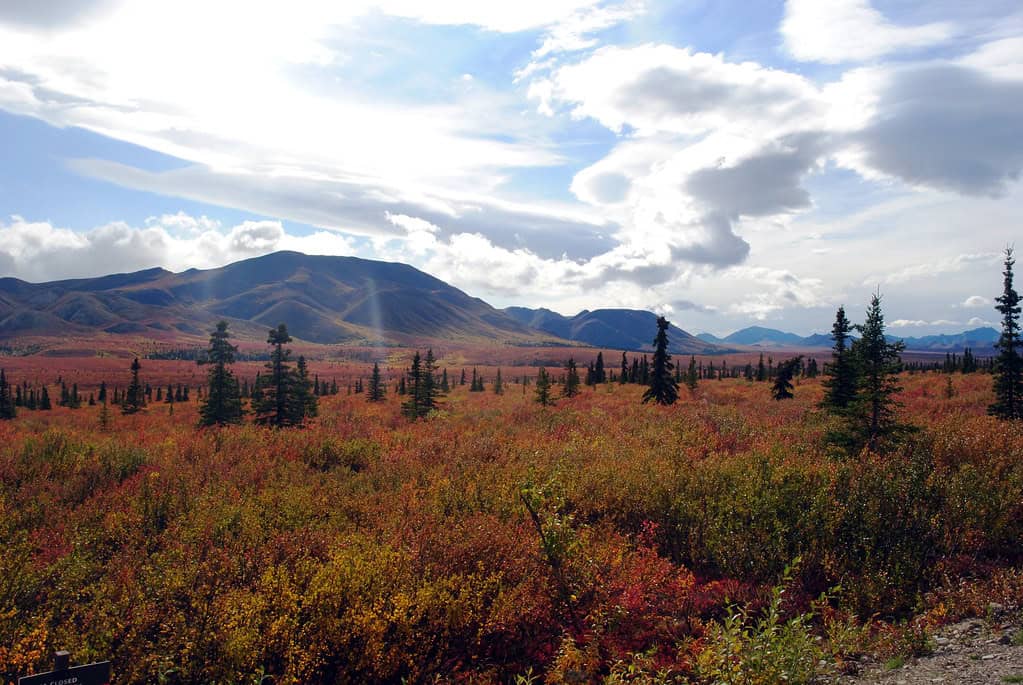
While the Big Five mammals rightfully attract significant attention, Denali hosts an impressive diversity of other wildlife worth appreciating. Smaller mammals include the industrious beaver, porcupine, red fox, lynx, wolverine, and various ground squirrels. The snowshoe hare population follows cyclical boom-and-bust patterns, influencing many predator populations that depend on them. Bird enthusiasts can spot golden eagles soaring above the mountains, ptarmigan (Alaska’s state bird) changing from winter white to summer brown plumage, and migratory species including trumpeter swans and various waterfowl.
During salmon runs, American dippers perform impressive underwater feeding displays in clear streams. Even the tiny but tough wood frog deserves recognition—this remarkable amphibian can survive being mostly frozen during winter through specialized adaptations. Appreciating this broader diversity enhances understanding of the complex ecological relationships that support the Big Five mammals.
The Timeless Wilderness Experience
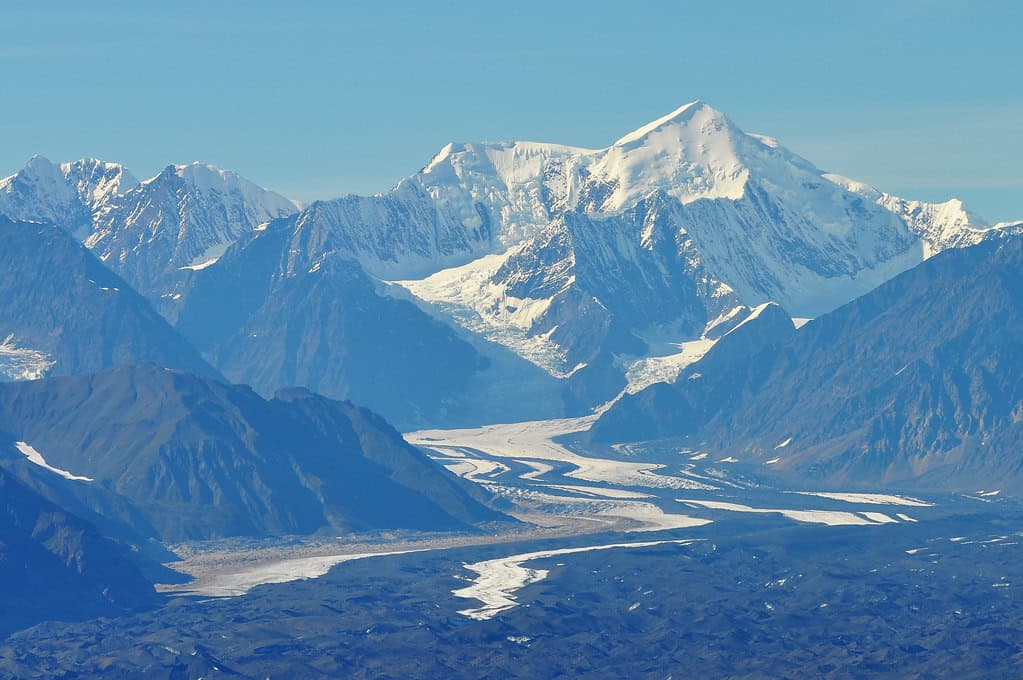
Denali National Park offers a wildlife viewing experience unlike any other in North America. As the only place where visitors can reliably see all of Alaska’s Big Five mammals—brown bears, moose, caribou, Dall sheep, and wolves—in a single protected area, it provides a window into what much of the continent may have looked like centuries ago. The opportunity to witness these magnificent creatures moving freely through vast, undeveloped landscapes creates profound connections with nature that visitors carry with them long after leaving.
Beyond simple wildlife viewing, Denali offers a chance to understand the complex ecological relationships that have evolved over millennia in this subarctic wilderness. The experience reminds us of our responsibility to preserve these increasingly rare intact ecosystems where natural processes can unfold without significant human interference. In an age of increasing development and climate uncertainty, Denali stands as a testament to America’s foresight in protecting these wild spaces for future generations.
- The Alaska Reserve Where You Can See All Five Big Mammals - August 12, 2025
- The Secret of Animals That Can Breathe Through Their Skin - August 11, 2025
- Fascinating Facts About Animals That Hibernate - August 11, 2025

